Coca-Cola’s “Share a Coke” campaign is a true marketing success story.
With the campaign, the brand was able to grow sales of its signature beverage for the first time in ten years.
The hashtag #shareacoke became a trending topic on social media across the globe.
User-generated content earned the brand and its campaign tons of publicity and media coverage, that required no cost or effort when two soon-to-be parents posted a video to YouTube where they announced their pregnancy by drinking from Diet Coke cans with the names “Mom” and “Dad” on them.
The “Share a Coke” campaign was brilliant because it was unique, clever, and compelling to the brand’s target audience.
Now imagine that after seeing Coca-Cola’s success with the campaign, Pepsi started putting names on the labels for its beverages.
Pepsi’s campaign would fail to drive the same desirable results as the Coca-Cola campaign, and it would likely receive a tremendous amount of criticism from the media, other marketers, and the public.
The moral of the story: copying other brand’s marketing strategies is a path to mediocre results or, worse… complete failure. But this copy-paste approach is prevalent in modern digital marketing.
Marketers find something that works, publish an article or case study about it, and everyone else adopts the approach.
The result: customers get so tired of seeing the same tactics that they become blind to it.
It’s the cause of the clickbait headlines that claim email marketing is dead, content marketing is dead, SEO is dead, or Facebook marketing is dead.
None of those things are dead.
People just either learned to ignore duplicative and unoriginal campaigns and techniques, or they found ways, like installing ad-blockers to avoid them completely.
An effective customer acquisition marketing strategy isn’t copied and pasted from the approaches, successes, and tactics of other businesses.
It’s unique, clever, creative, and personalised to both your business and your target customers.
To develop a successful marketing strategy, one that drives customers to your business builds brand awareness, drives engagement, and produces real results – you must take time to develop your own customer acquisition playbook.
If you’re unsure how to do this, don’t worry, because I’m going to show you how.
Buyer personas that are created as a result of a brainstorm are a good starting place, but at some point, you’re going to have to dig deep and conduct some research in order to truly understand the unique profile of your customers.
In his article “You Don’t Know Your Customer and It’s Crippling Your Growth,” Benji Hyam argues that truly knowing your customer means having seven key pieces of information:
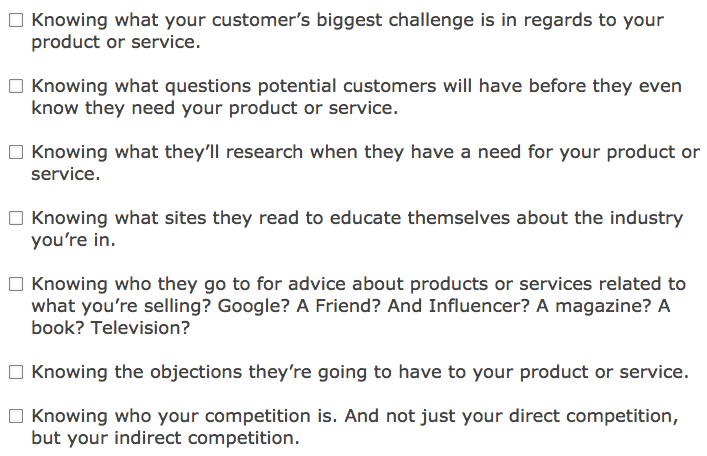
These pieces of information are very specific.
They require much more detail than what’s covered in the typical buyer persona.
There are a few different ways to get to this level of understanding about your audience:
Have conversations with or survey prospective and existing customers, making sure to ask the right questions.
Talk to your sales team and customer service reps; these individuals have direct access to customers and often understand prospects’ needs and pain points better than anyone else. Add Qualaroo to your site to survey anonymous website visitors.
At Ruler Analytics, we used our own platform and ChartMogul to identify the specific sector where our product had performed the best over time.
Without the data, we may never have known that this sector was an important audience for us. By focusing our marketing on that sector, we were able to more than double our monthly recurring revenue.
Take Dave McClure’s “Niche to Win” approach. Focus your initial offerings on a small, niche audience.
The more focused you are, the more you’re able to work with customers and prospects in your niche, and the more knowledge you’ll build about the wants and needs of customers in that segment over time.
Platforms like Mixpanel and Amplitude are focused on helping you understand where you earn the most engagement from visitors to your site, what features users are most interested in, and how effective you are in moving prospects through the funnel.
This allows you to identify how your customers are using your product and also helps ensure they love it.
As Benji Hyam says:
“When you know your customer inside and out, that’s when you’re able to come up with ideas, messaging and tactics that will change the growth trajectory of your business.”
Impactful growth starts with really and truly knowing your audience.
For this reason, the starting point for any customer acquisition marketing strategy is doing the necessary research to go beyond buyer personas to develop a deep understanding of your audience.
You shouldn’t copy your competitors’ strategies, but you should know exactly what their strategies are, which are working, which aren’t, and how their strategies could be improved.
Then, focus on areas and channels they’re neglecting.
Say, for example, that your biggest competitor is a content marketing master.
That competitor dominates the search results for relevant keywords with its massive library of comprehensive, actionable, audience-focused content.
Its blog has thousands of backlinks from high-authority sites.
On the other hand, you’ve yet to write your first blog post.
Until recently, your website was a “coming soon” page, so you have few backlinks and zero authority with the search engines.
It doesn’t make sense to put all of your efforts into content marketing up front.
If you do, you’ll likely struggle to drive meaningful results in the short-term.
What you need to do instead is find out what’s working for your competitors, and allocate less effort to those strategies initially.
Then find out what techniques they’re neglecting, or identify ways to improve on their successful strategies, and use those ideas to develop your own unique strategy.
There are many ways to find out what your competitors are doing, what’s working for them, and what they’re neglecting:
Ahrefs is an SEO analysis tool that allows you to see what keywords competitors are ranking for and from whom they’re getting backlinks.
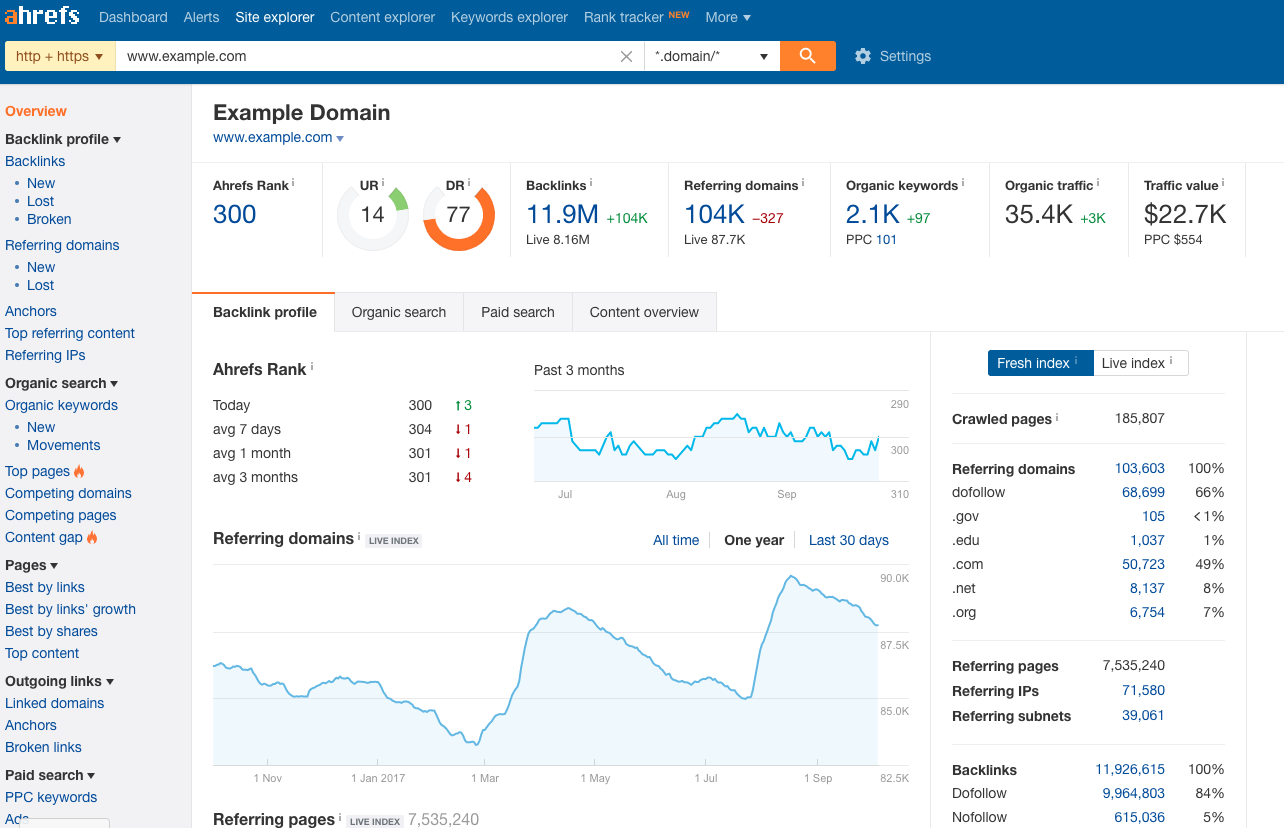
Use it to find keyword and backlink opportunities, find out how competitors are promoting their content (guest posts, appearances on podcasts, etc.), and determine if there’s an opportunity to do what they’re doing—but better.
SimilarWeb allows you to research which channels—search, referral, email, PPC, display ads, and social—perform best for your competitors as well as across your industry.
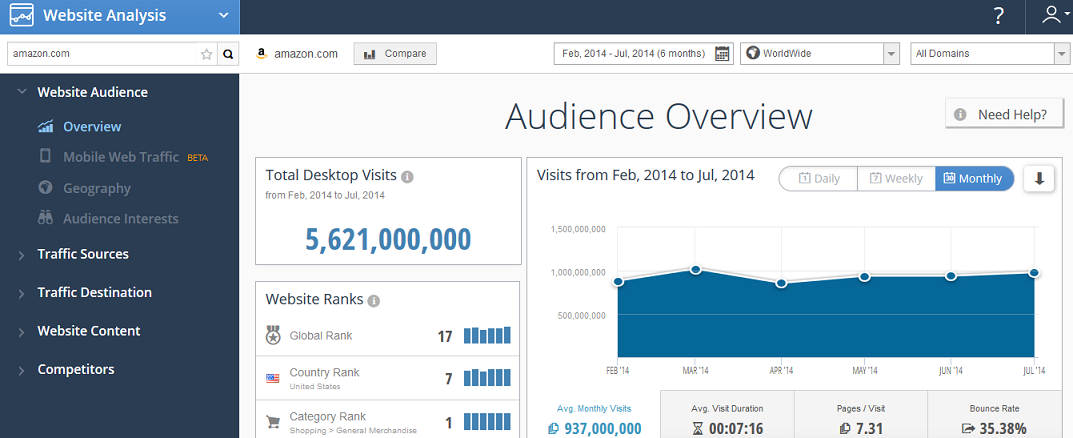
Use the information to identify channels competitors are failing to take advantage of, and focus efforts there.
Buzzsumo has many features that aid in competitor monitoring. Find out what content has received the most shares for both your competitors and important industry keywords.
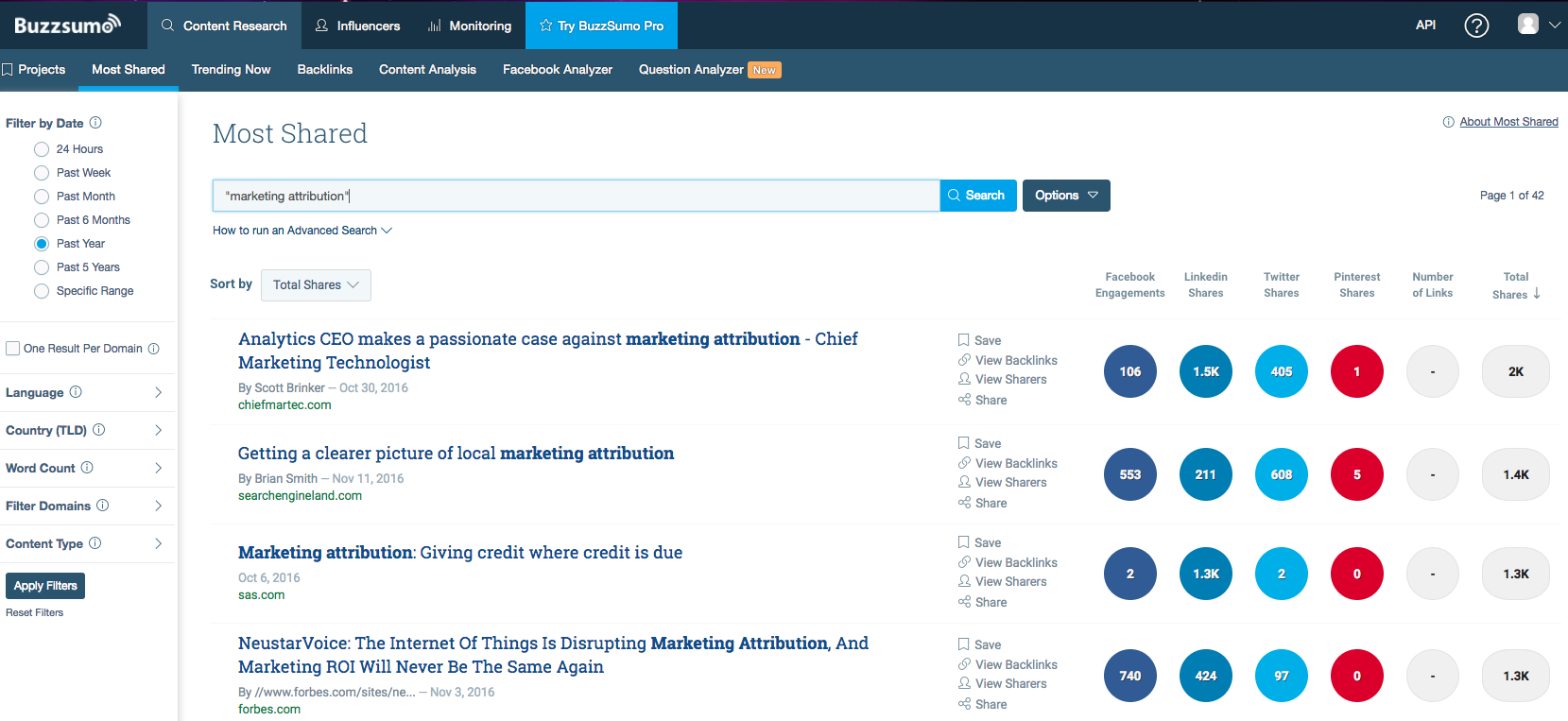
Use its monitoring feature to set alerts for your own brand, competitor brands, and important keywords. Identify key influencers in your industry for valuable partnership, sharing, and linking opportunities.
Set up Google Alerts for competitor brand/product/author names, and receive a daily digest of newly published content that uses the words in your alert.
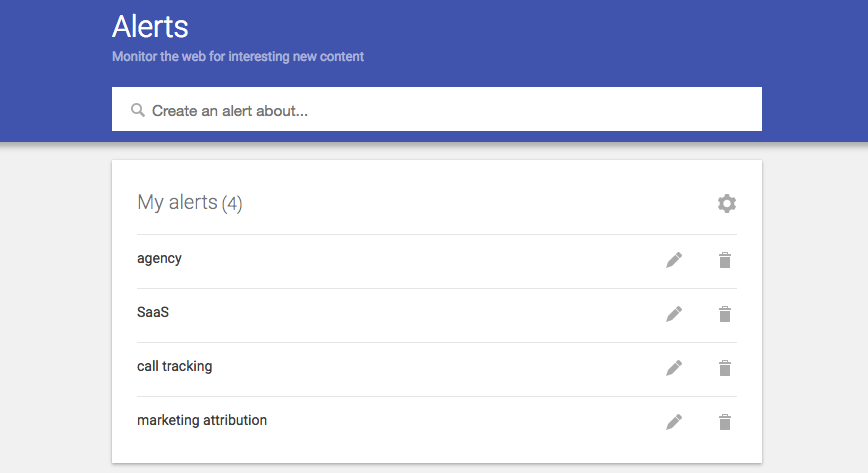
This is a great way to find out when competitors are shifting their tactics and focusing on new strategies.
Additionally, competitors will often share information publicly about their successes.
You can find out a lot about competitors by reviewing the case studies they’ve published on their sites, subscribing to their email list, following them on social media, and reviewing their new blog posts.
Going back to the earlier discussion of your largest competitor who is a content marketing master: using the tools above, you may find that because of its success with content marketing and SEO, your competitor doesn’t run Google Ads ads.
With the right bids, you could get an ad for your product to appear above your competitor’s organic results.
OkDork’s Noah Kagan recommends using a quant-based marketing approach:
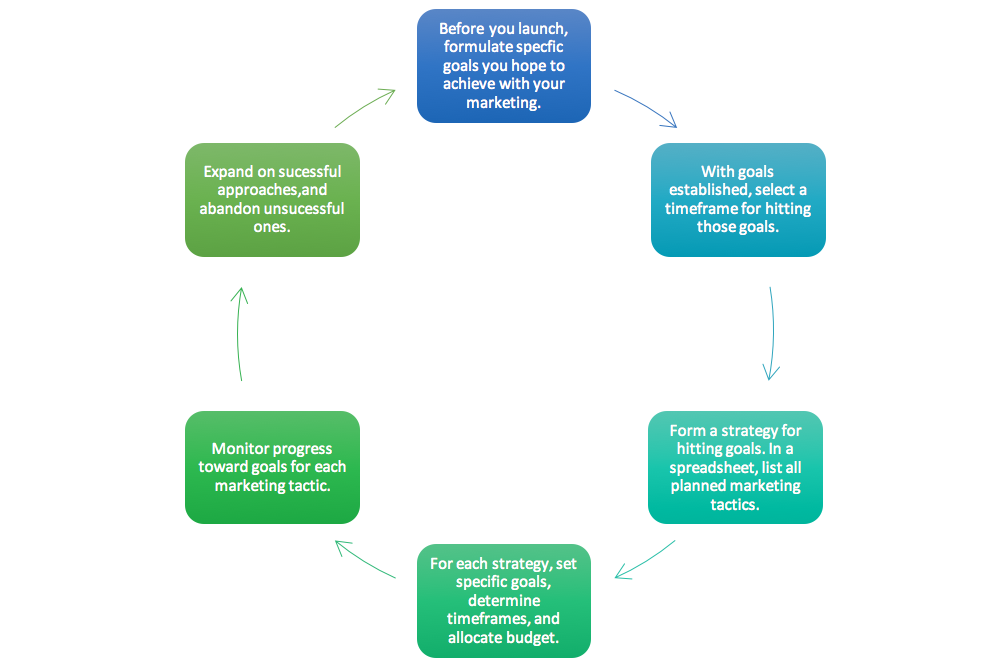
If you’ve completed the audience and competitor research exercises, you already know your audience, and you know where competitors are failing to engage that audience.
Use that knowledge to formulate specific techniques you plan to use in your customer acquisition marketing strategy.
Next, conduct short experiments to test your theories.
Don’t make the mistake of continuing to invest in an underperforming strategy.
It’s crucial to monitor results and find out what really works for you.
Not everything will.
If something fails, identify the failure early, abandon the approach, and focus on something that is working.
Experimentation is the final step in creating a customer acquisition strategy that’s unique to your business, not a basic replication of what others are doing.
Find out what your target customers want and need, form hypotheses on how you can best fulfil those needs, and test those hypotheses to establish proof.
With techniques that are proven to work for your business, you’ll have created an original customer acquisition playbook that you can rely on when forming new marketing strategies designed to grow your business.
Successfully growing a business requires marketers to think beyond “best practices” and clichés like “content is king.”
Best practices are just recommendations.
They’re only best practices for you if you’ve taken the time to hypothesize, test, and establish proof.

Content may be king, but it’s the king of an oversaturated market.
Publishing content isn’t enough.
You must publish quality, actionable, audience-focused content—and promote it on the right channels—to get it in front of the people who are interested in buying what you’re selling.
Without a customer acquisition marketing strategy that’s unique to your business, you run the risk of wasting time, budget, and resources on tactics that produce lacklustre results.
Don’t fail before you begin by replicating other brand’s strategies.
Grow your business, do something unique, and achieve success by taking the time upfront to create your own customer acquisition playbook.